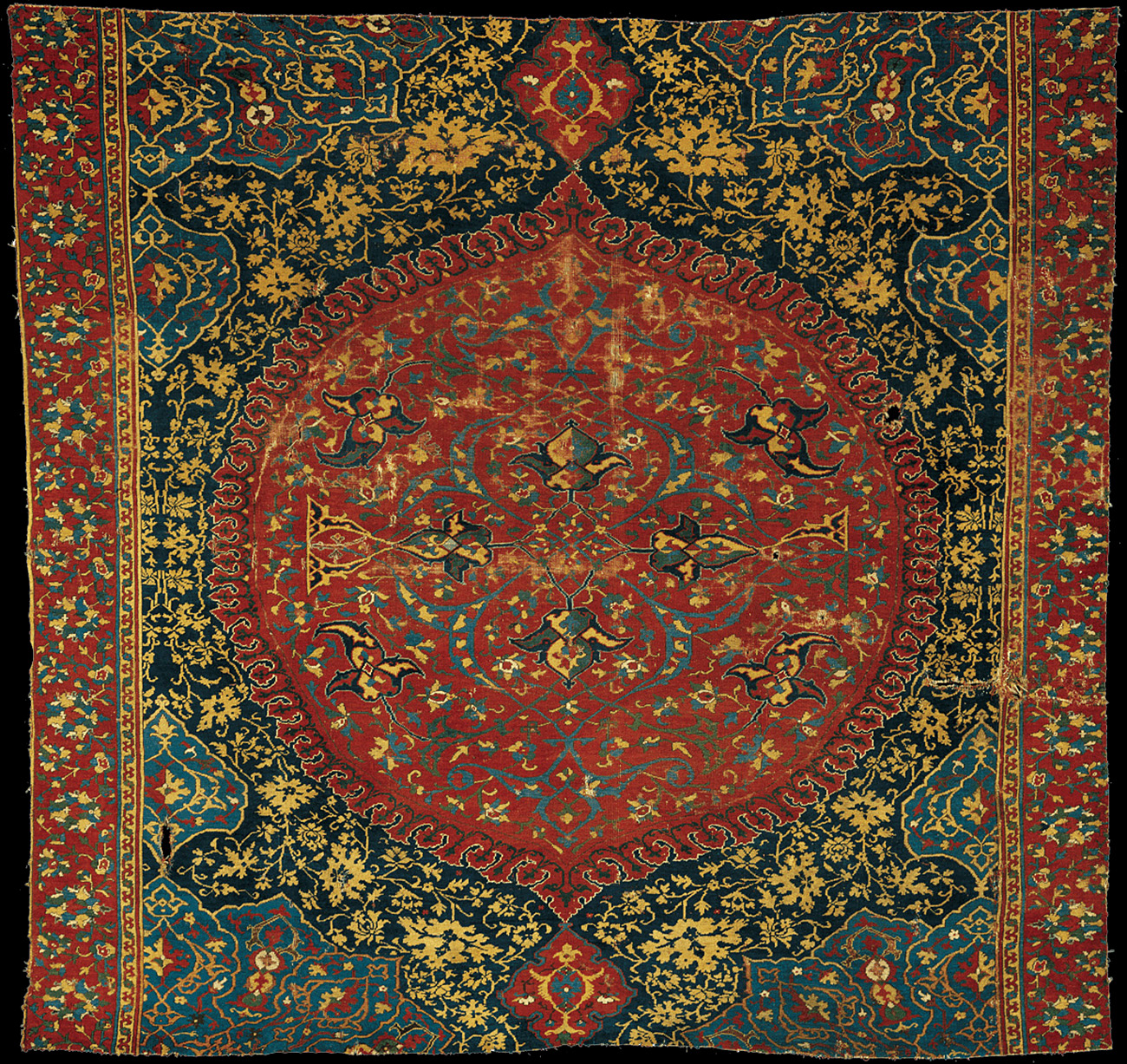|
Medallion Ushak carpet fragment, Anatolia, late 15th century.
published MILESTONES IN THE HISTORY OF CARPETS by JON THOMPSON. Moshe
Tabibnia Collection, Milan 2006
2.33 x 2.23m (7'8" x 7'4")
According to Julian Raby these unprecedentedly
large and curvilinear carpets were first produced in the Ottoman court
workshop of Mehmed II (r.1451–80). Noting their modest width,
comparing
in great detail a series of splayed or inward-curling ‘oak’ – actually
lotus – leaves represented on the carpets and in other media, and
summarily pronouncing the Ushak
floral tracery “inept and unconvincing”
(an observation belied by this splendid fragment), he concludes that
Ushaks were never Ottoman court rugs but rather were part of a “blossoming
experimental activity in the commercial looms of Ushak in the late
fifteenth century,” informed by “influences from Central Asia via Iran...”
Not considered here is the identity of
the clientele for these
revolutionary carpets – who, if not the Ottoman court itself, might have
fostered their new style and commissioned so many of them, since Europeans
apparently
didn’t import them until the mid-16th century.
 |

